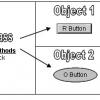|
|
Synthesize Your Test Data In a society growing ever conscious of the benefits of organic materials, "synthetic" is a dirty word. But in this week's column, Danny R. Faught argues that when you're designing tests, synthetic data is the way to go. Read on to learn why it's important to be the master of your data.
|
|
|
|
Testing, Ka-Ching! One of the most frustrating aspects of software testing is that it typically is viewed as an expense that should be minimized. Sure, you can argue until you drop that it is cheaper to find problems in test than it is in the field, but deep down everyone still wants to spend as little time and money on testing as they think they can get away with. That's why Linda Hayes always has been motivated to find a way to make testing a profit center. And it seems as if she just found her first real-life example. In this column, she describes how one company is positioning to make testing a profitable department.
|
|
|
|
Ugly Baby Syndrome We testers have a delicate job. Sometimes we need to look the proud parents of a newborn software application right in the eye and tell them "You have an ugly baby!" This article tackles the best way testers can tell someone that they have an ugly baby.
|
|
|
|
What Not to Test When It's Not Your Code This article is a continuation of a previous write-up on "What to Test When It's Not Your Code." As mentioned previously, test strategies should be radically different and flexible when it comes to testing code delivered by any vendor external to an organization. Similarly, the rationale behind deciding what does not need to be tested or what is given the lowest testing priority for external software products should be radically different from the rationale practiced for in-house software products. The reason for the differences has a lot to do with the risk posed by the third-party application on the daily operations of the organization. Also, the credibility of the vendors can play a major role when deciding what takes a lower priority in testing.
|
|
|
|
A Game Plan for Rapid Test Planning Rapid test planning is a process of cultivating test ideas within minutes, rather than days. It's opposed to rigorous test planning, which may strive to document every test possibility. The mission is to get testing on the road now, finding critical things to test, and getting important information to stakeholders quickly. In this article, Jon Bach explains how easy it can be to tackle a rapid test plan once you've got a strategy in mind.
|
|
|
|
Toolsmiths-Embrace Your Roots People have been automating software development, testing, and deployment processes since the stone age of software. The toolsmith of today shares a lot in common with these ancestral automation efforts. In this week's column, Danny Faught details how toolsmiths can learn by studying the computer subcultures of the past and present that are similar to their own.
|
|
|
|
Improving the Accuracy of Tests by Weighing the Results Test automation is often hard to do well, especially when testing a complex system where the results may be dynamic and hard to predict precisely. For instance, how would you test a price finder for highly volatile products such as airline tickets, where the data comes from live, third-party systems? While manual testers can interpret such results to decide whether a system is working correctly, the interpretation may be much harder to codify in an automated test. In this week's column, Julian Harty describes an approach that may help you to improve the accuracy of your automated testing even in these volatile environments.
|
|
 |
Object of My Desire Object orientation, the least talked about component of test automation, might be the most important factor. In this column, Dion Johnson explains how effective test automation is heavily reliant on objects.
|
|
|
|
Things Testers Miss Bugs slip into production in spite of the best efforts of designers, coders, and testers. While testers may not be responsible for the introduction of bugs to the system, they bear some responsibility for the introduction of bugs to the user. Testing can be adjusted to reduce the number of bugs that pass through to production--without necessarily requiring more resource.
|
|
|
|
Events to the Rescue You probably know at least one project that has been mired in controversy and indecision during analysis. Team members arm wrestle about a variety of issues: Should we write use cases or user stories? How does user interface design fit with use cases? What is the "right" size for a use case or story? In many situations, an effective remedy is to define your project's events. In this column, Mary Gorman looks at an example from a recent engagement.
|
|

